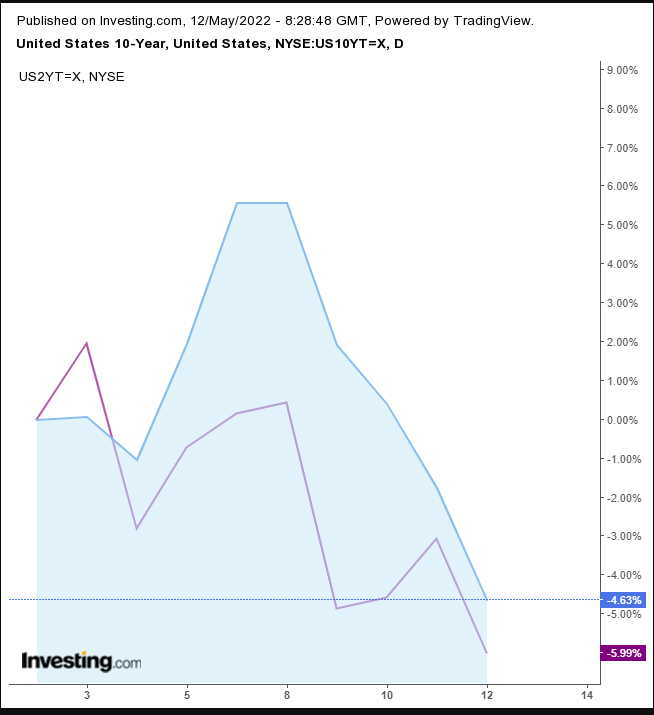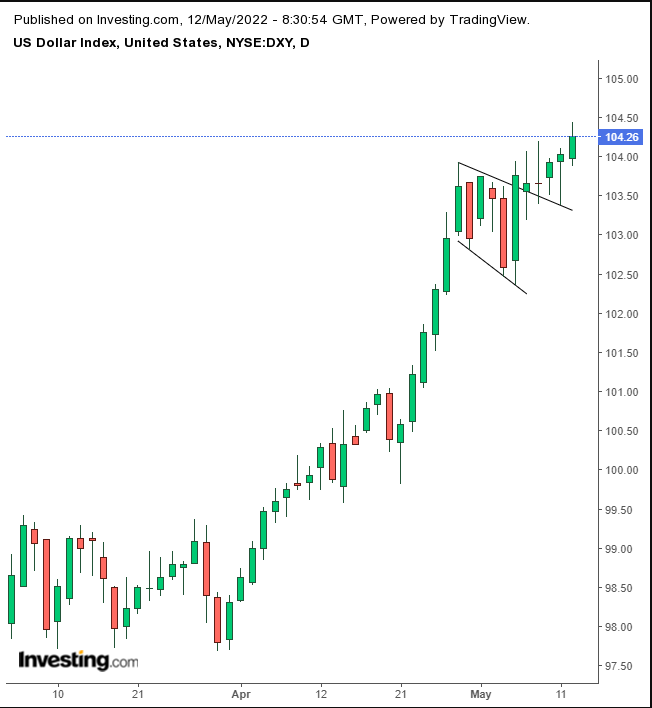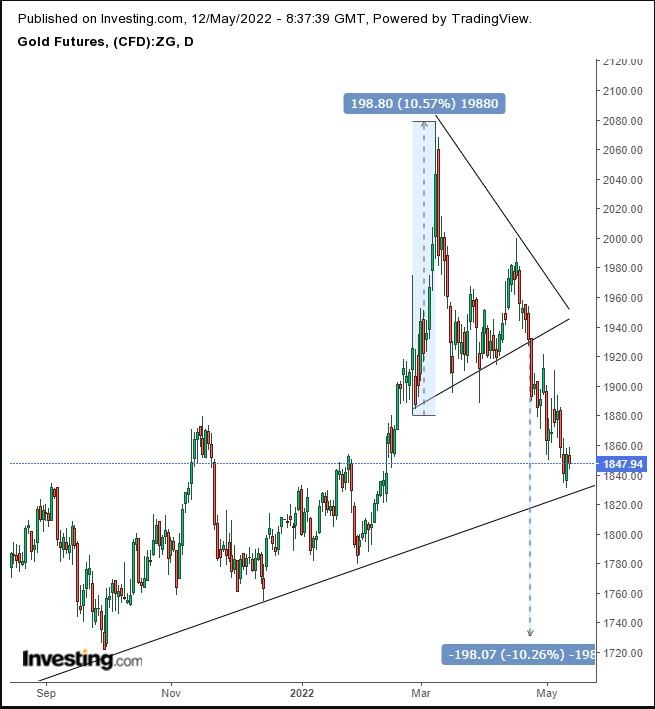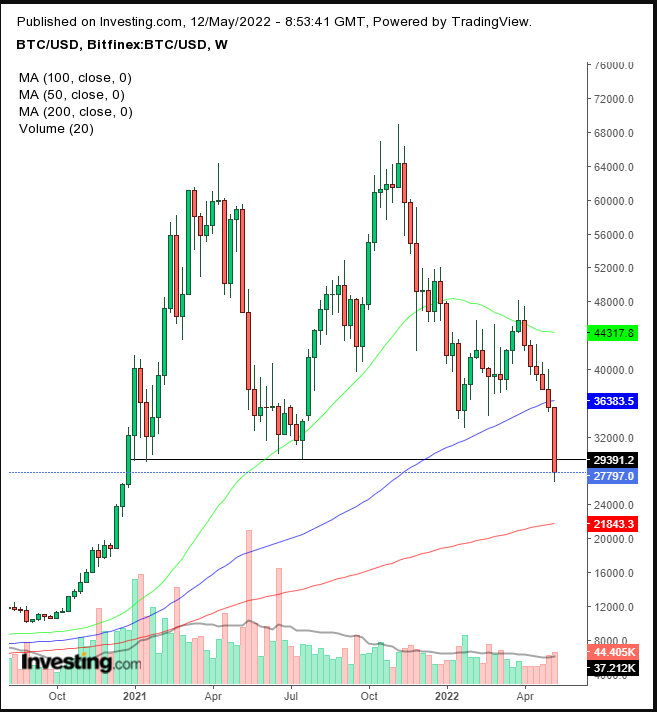- US CPI remains elevated
- Bitcoin plunges
- US yield curve flattens
- European industrial production is released on Friday.
- University of Michigan consumer sentiment is released on Friday.
- On Friday FOMC members Mester and Kashkari are due to speak.
- The MSCI Asia Pacific Index fell 1.8%
- The MSCI Emerging Markets Index fell 2.3%
- The euro fell 0.6% to $1.0450
- The Japanese yen fell 0.9% to 128.76 per dollar
- The offshore yuan rose 0.7% to 6.8087 per dollar
- The British pound fell 0.3% to $1.2208
- Brent crude fell 1.5% to $105.65 a barrel
- Spot gold fell 0.1% to $1,850.66 an ounce
Key Events
On Thursday, Dow Jones, S&P 500, NASDAQ 100, and Russell 2000 futures extended the previous day's selloff of the underlying gauges, and European shares also slumped.
Persistent inflation in the US dispelled any hopes that the Federal Reserve would ease its pace of policy tightening, ending the most accommodative monetary policy in history.
Crashing cryptocurrencies made a bad situation worse, as retail traders panicked, proving that this asset class is neither a haven nor a store of value.
Global Financial Affairs
Although all four leading indices contracts were in red, technology stocks, continue to underperform. The S&P 500 and the Dow Jones fell to their lowest levels since March 2021, while the NASDAQ 100 and Russell 2000 indices dropped to their lowest since November 2020. The S&P 500 and NASDAQ topped out.
In Europe, the STOXX 600 sold off and the pan-European index reached its lowest level since Mar. 8. If it closes 0.75% lower than yesterday, it will be the weakest close since March 2021. European natural gas prices jumped on a possible supply disruption from Russia while raw materials underperformed.
In the UK, the FTSE 100 opened lower, recovered slightly and then slumped again. Britain's GDP shrunk by 0.1% in March, exacerbating stagflation worries —a slowing economy with high inflation and high unemployment—as inflation remains high. This economic condition is difficult for policymakers as the tools required to tame inflation exacerbate unemployment. The FTSE 100 fell back below its 100 DMA, and the 50 DMA crossed below its 100 counterparts.
Asian markets took their lead from Wall Street which slid yesterday after the release of worse than expected CPI figures. In Hong Kong, the Hang Seng plummeted 2.25%. The index was also dented by the dramatic arrest of a prominent democracy advocate which raised concerns of additional crackdowns.
The CPI release as well as comments from the Federal Reserve Bank of Atlanta President Raphael Bostic that he was happy to "move more" on raising rates saw Treasuries across the curve—maturing dates—climb. The 10-year note erased ten basis points. However, the curve flattened, with the spread between 2-year and 10-year narrowing, increasing the chances of an inversion, a leading recession indicator.

The dollar extended its advance to a third day, after completing a bullish pattern, on the outlook for further rate hikes.

The recent intraday lows bounced off the top of the Falling Flag, bullish after the preceding sharp rise.
Gold declined on dollar strength, despite high inflation.

The yellow metal found support above its uptrend line since the August low. The implied target of the preceding triangle—which turned out to be bearish—targets the low $1,700s, well below the uptrend line.
(Bitcoin) slid for the second straight day, extending the slide to 7 out of 8 sessions.

The cryptocurrency fell to its lowest since December 2020, completing a massive double top amid heavy volume, which puts it on track to single digits in the thousands.
Oil prices continued to fluctuate, falling back toward $103 after the $106 mark just yesterday.

After completing the bullish Symmetrical Pattern, the price has been ranging within a rising pattern, slightly wedged. A break above $112 should send prices to retest the March peak.
